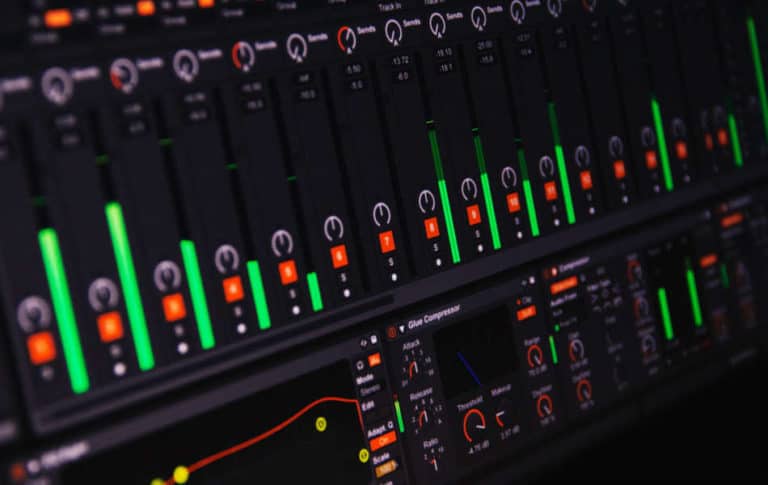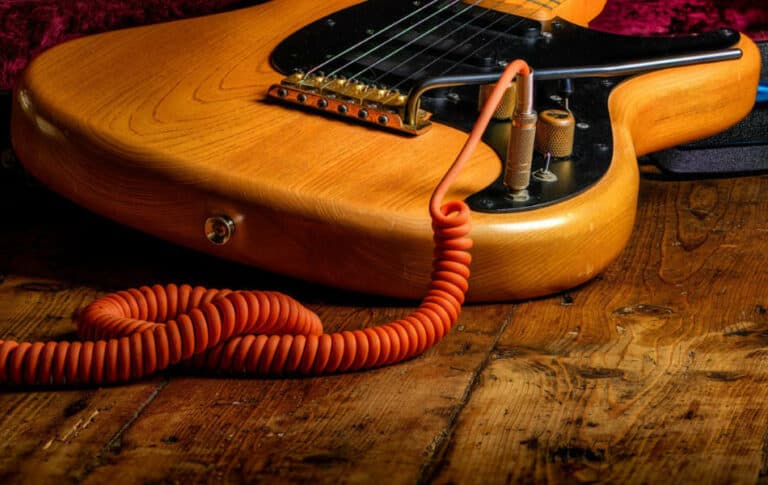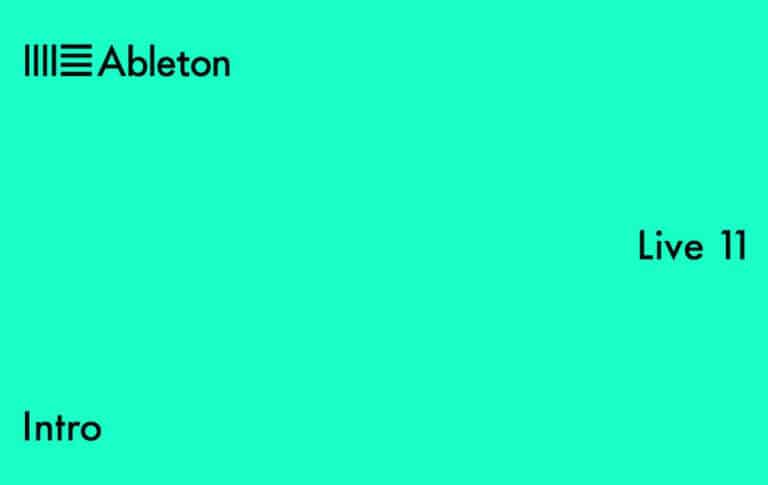The Best Harmonica for Beginners

If you are thinking about starting to play the harmonica the first thing you will need to do is buy a harmonica.
With other instruments like guitar or keyboard you can have a go with other people’s instruments to see what you like or don’t like before you buy.
However, with the harmonica you can’t really do that since you blow into it and people don’t normally like to lend you theirs to try.
This can make it difficult for beginners to decide which harmonica would be best for them.
Here we are going to look at the main options to consider when buying a harmonica. This is based on my experience, and the knowledge I have picked up along the way as a harmonica player.
To play blues, country and add instrumental breaks in songs a Diatonic Harmonica is the best choice.
The best type of harmonica for beginners would be a 10-hole Diatonic Harmonica in the key of C Major. The harmonica I would recommend is the Hohner Special 20.
In the rest of this article I will try to explain why I believe this is the best harmonica for beginners.
We will talk a little about the features of the two main types of harmonica you could consider (Diatonic and Chromatic), and why you will probably want to choose a Diatonic Harmonica. We’ll also look at some types of harmonica that beginners should avoid (i.e. Tremolo Harmonicas).
Various Types of Harmonica
When I was growing up we had a harmonica at home.
The harmonica was in a drawer, and every now and again I would take it out and try to play it. It seemed to be impossible to get a tune out of it.
Other kids I knew had harmonicas at home too, and these kids couldn’t play them either.
My grandparents even had a harmonica, and no-one seemed to be able to play that one.
On TV I had seen John Lennon, Mick Jagger, Neil Young and Stevie Wonder playing the harmonica, and I had heard the theme from Midnight Cowboy.
This harmonica music all sounded fabulous, but no-one I know could get a decent tune out of a harmonica.
I found out later it was because we all had the same type of harmonica, and it was virtually impossible for anyone to play.
Avoid Harmonicas with Two Rows of Open Holes
The harmonicas that me, my friends and relatives had had tried to play looked very similar.
They were about seven inches long and in the front, where you blew into, there were two rows of holes – one above the other. Similar to the one in the image below.
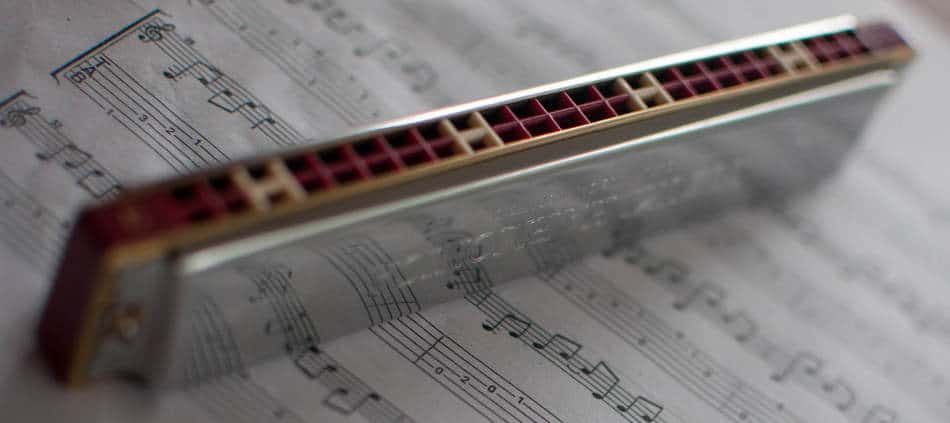
I now know that this type is called a Tremolo Harmonica, and it has probably put more people off playing the harmonica than almost anything else (IMHO).
Even now, after all these years, I still can’t figure out how the notes on the Tremolo Harmonica are organised, or how you are supposed to get a tune out of it.
So, if you already have one of these harmonicas, you may be despairing that you will never be able to play harmonica. Don’t worry: no-one I know can play this type of harmonica.
If you don’t already have a Tremolo Harmonica, then I would advise you not to buy one now. Especially if you are a beginner. There are much better harmonicas to get started on.
The Two Types of Harmonica Beginners Should Consider
Having dismissed the dreaded Tremolo Harmonica, what type of harmonica should beginners consider buying?
If you have ever seen anyone playing harmonica live or in a video, or heard a harmonica in a song, it will almost certainly have been one of two types: a Diatonic Harmonica or a Chromatic Harmonica.
You can see an image of my Chromatic Harmonica and one of my Diatonic Harmonicas in the image below. The top one is the Chromatic Harmonica and the bottom one is the Diatonic Harmonica.
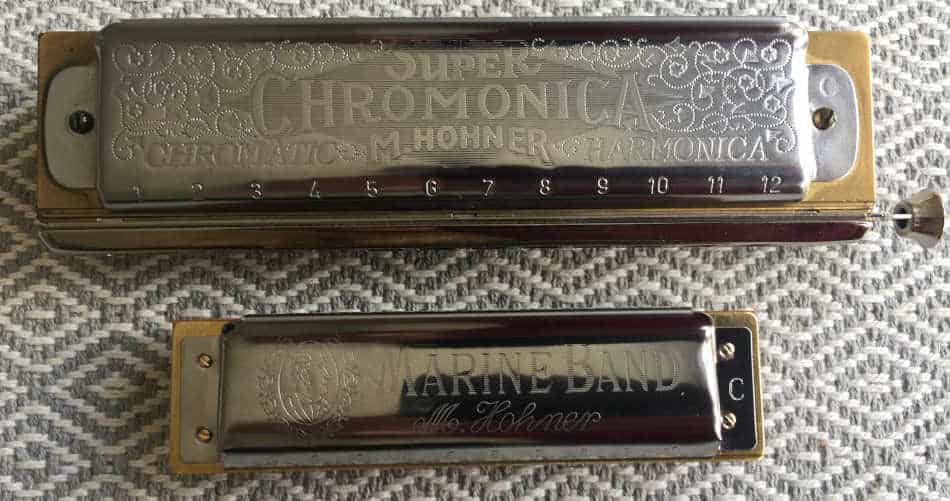
Diatonic Vs Chromatic Harmonica
If you know anything about music you might recognise the terms diatonic and chromatic.
Diatonic means that the harmonica will only play notes in one particular key, e.g. C Major, G Major, F Major, and so on.
This sound would be like starting on the C note on a piano and only playing the white notes until you get to the next C. That’s the C Major scale.
Chromatic means that all notes can be played. By all the notes I mean the white notes and black notes on a piano.
This sound would be like starting at C on the piano keyboard and playing all the white and black notes in turn. That’s the chromatic scale.
Diatonic – One Key, Chromatic – Any Key
Apart from the other features of the two types of harmonica, there’s one thing you probably thought of already.
With a Chromatic Harmonica you can play in any key. With a Diatonic Harmonica you can only play in one key (or a small number of keys once you get past the beginner stage).
Despite the apparent limitations, the Diatonic Harmonica is by far the most popular of the two types, and the easiest to figure out.
If you ever hear someone referring to a harmonica as a “harp”, they are talking about a Diatonic Harmonica.
I’m going focus on the Diatonic Harmonica here since it’s almost certainly the best option for beginners. It’s more affordable than the Chromatic Harmonica, and it’s easier to get started.
Diatonic Harmonica
A Diatonic Harmonica is designed to play notes in one particular musical key. For this reason they are available in all 12 musical keys – major and minor.
However, the most popular Diatonic Harmonica key would be the key of C Major.
As you probably know, the key of C contains no sharp or flat notes, so it’s easiest to understand what you are playing. Also, the popularity of the C Harp means it is easy to find learning materials like books and videos to help you learn.
Diatonic Harmonica Tuning
Diatonic harmonicas normally have 10 holes, which you either blow air into or suck air out of.
The word that is normally used instead of “suck” is “draw”, so from now on we’ll refer to blowing and drawing.
Each hole has two reeds that vibrate as air passes through them, either by air moving in (blow), or air moving out (draw). This produces the musical note that the reed is tuned to.
The holes are numbered from 1 to 10 left to right as you look at the top of the harmonica. You can see the numbered above the blow/draw holes in this image.

Diatonic Harmonica Construction
The video below shows the construction of a Diatonic Harmonica, and how the various components fit together to make up the instrument.
The video comes from Annie Raines’ Harmonica Blueprint Course, which I talk about more later in this article.
Example: Diatonic Harmonica in the Key of C Major
To keep things fairly simple we’ll use the example of a Diatonic Harmonica tuned to the key of C Major. For Diatonic Harmonicas in other keys you can convert the notes to the equivalent notes in the particular key.
You can see the notes played by blowing and drawing on the 10 holes of a diatonic harmonica in C Major. This is called Richter Tuning.

We’ll start with holes numbered 4 to 7 since this section of the harmonica is the easiest to understand.
Holes Numbered 4 to 7
Holes numbered 4 to 7 let you play a diatonic scale. If you have a diatonic harmonica in C major tuning you will be able to play the C Major scale here.
The reeds in these holes are set up so that you play a major scale like this as you blow and draw on the holes:
- Hole 4 – blow C, draw D
- Hole 5 – blow E, draw F
- Hole 6 – blow G, draw A
- Hole 7 – draw B, blow C
You have to watch out for hole number 7 since the order of blowing and drawing is reversed compared to the others.
Once you get the hang of playing the notes of the scale, where they are and what they sound like, you can find some songs in the same key as your harmonica and play along.
If you just stick with these middle four holes you should be able to pick it up and play a melody pretty quickly.
Holes Numbered 1 to 3
One of the most confusing things about starting to play the diatonic harmonica is the first three holes – numbers 1 to 3, and the last three holes – 8 to 10 (of which more later).
If you play holes 1 to 3 in order, by blowing and drawing in turn you don’t get notes that follow each other in scale order like you do with holes 4 to 7.
As you blow and draw on holes 1 to 3 you hear these notes:
- Hole 1 – blow C, draw D
- Hole 2 – blow E, draw G
- Hole 3 – blow G, draw B
If you look a the three blow holes you will see that if you blow them together you play a C Major chord. If you draw the three holes together you play a G Major chord.
This lets you play chords in parts of a song, in addition to the melodies played on the middle four holes. The holes are lower in pitch, which can help to “keep them out of the way” of the main melody.
Holes Numbered 8 to 10
As you blow and draw on holes 8 to 10 you hear the notes:
- Hole 8 – blow E, draw D
- Hole 9 – blow G, draw F
- Hole 10 – blow C, draw A
Blowing on all three holes together gives you a very high-pitched C Major chord.
Drawing on all three holes together gives you a very high-pitched D minor chord.
You can also play the notes individually to include higher pitches in a melody you are playing.
Looking at All the Blow/Draw Holes Together
If you look at all the holes on the harmonica together you can see that chords are playable along the entire length of the instrument.
Blowing three holes together anywhere on the harmonica plays a C Major chord.
Drawing on holes 2, 3 and 4 together plays a G Major chord. Drawing on holes 4, 5 and 6 together plays a D minor chord.
Also, the way in which the notes are organised also lets you play intervals that sound good while playing a melody.
This means you don’t have to worry about only playing one melody note at a time, since you can add some harmony by blowing or drawing on adjacent notes at the same time as the main melody note.
Learning to Play the Diatonic Harmonica
Once you have purchased your Diatonic Harmonica, and I’ll suggest the one to buy below, you will want to learn how to play it.
You can do it by trial and error as you listen and play along to songs. However, when you listen to people who can really play this type of harmonica you may not be able to figure out what they are doing.
The best resource for learning the Diatonic Harmonica that I have ever found is called Blues Harmonica Blueprint, by Annie Raines. It’s a video course, it’s great fun to follow and you can learn more below:
Although the title refers to Blues Harmonica, it also covers Roots Harmonica, and the course material will serve you well in Pop and Country music styles too.
By the time you’re finished you’ll understand how many of the greatest harmonica (or harp) players produced their signature sounds, and be able to play in those styles yourself.
As Annie says at the beginning of the course, “all you need is a C-harp and a desire to learn…”.
I Should Have Known Better
The song that inspired me to start playing the harmonica was I Should Have Known Better by the Beatles.
There’s a scene in the movie A Hard Day’s Night where they play the song on a train, and John Lennon’s harmonica playing absolutely makes the song.
You can see the scene from the film below, and it still looks and sounds as good as it did all those years ago.
Earlier I was talking about Tremolo Harmonicas, how hard they are to play, and how everyone (including us) seemed to have one when I was growing up.
After I heard the Beatles song in the clip above I tried to play along with John Lennon’s harmonica with the Tremolo Harmonica we had at home.
I couldn’t even get close to sounding anything like the harmonica he plays in the song with this instrument.
However, as soon as I got my first diatonic harmonica (in the key of C) I couldn’t believe how easy it was to play a reasonable version of John Lennon’s harmonica fills in the song.
The Best Harmonica for Beginners to Buy
The best-known harmonica brand is probably Hohner, and the best known Diatonic Hohner Harmonica is probably the Marine Band.
But this isn’t the harmonica I would recommend for beginners.
The Hohner Marine Band harmonica is likely to be the type you have seen most musicians play. John Lennon, Mick Jagger, Sonny Terry, Paul Butterfield, Neil Young and Big Mama Thornton all played the Hohner Marine Band harmonica.
It’s very likely that John Lennon is playing a Marine Band harmonica in the video above.
My first proper harmonica was a Marine Band. Now, decades later, I still have it and play it occasionally. I have owned several more Marine Bands (in various keys) in the years since.
However, I’m going to recommend a different Diatonic Harmonica model for beginners. The one I would suggest you check out is the Hohner Special 20 Harmonica.
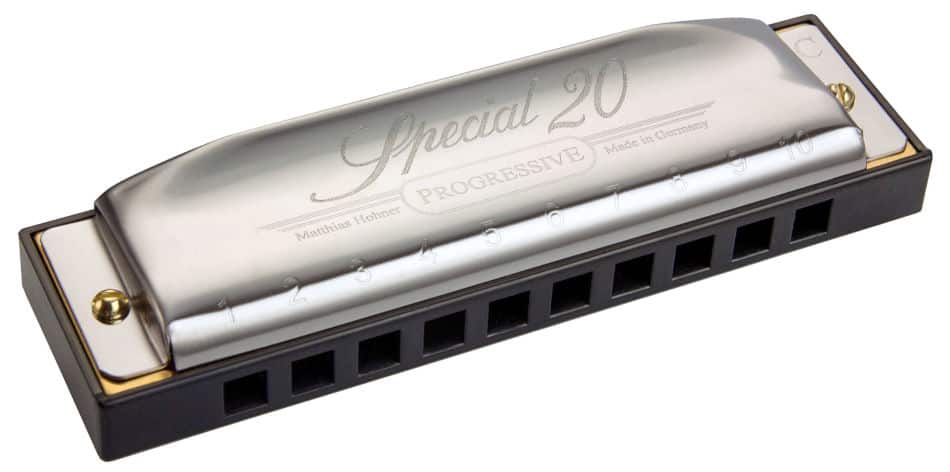
I bought my Special 20 from Amazon and you can check it out here.
Reasons for Recommending the Hohner Special 20 Over the Marine Band.
The original Marine Band harmonica (see it on Amazon) – often described as the 1896, which is the year it was introduced – has some shortcomings. The channel openings (blow/draw holes) are a little narrow, and the sharp edges can make it tricky to play.
Also, the comb (if you remove the top and bottom plates the part in the middle looks like a comb, due to the blow/draw channels) is made of wood. The wood can absorb moisture from your mouth, and this can result in swelling of the comb.
Hohner have tried to address this with the Marine Band Deluxe model (see it on Amazon) in a couple of ways.
The Marine Band Deluxe has rounded edges to the channel openings, which make playing it a little easier. Also, the wooden comb is sealed extra well to avoid absorbing moisture.
Why the Hohner Special 20?
The Special 20 is described by Hohner as “the best beginner’s instrument”. I promise I hadn’t seen that before I decided to recommend it here.
Also, the Special 20 is part of Hohner’s Progressive Series of instruments, designed to be suitable for beginners but not limiting you as you progress as a harmonica player.
Plastic Comb Prevents Moisture Absorption
The main difference you will notice between the Special 20 and the Marine Band is the Special 20’s plastic comb.
Plastic is sometimes seen as a poor substitute for wood, but not in this case. The plastic comb ensures there is no risk of swelling due to moisture absorption. Also, the plastic has a high-quality feel about it, so the harmonica doesn’t seem cheap at all.
Reed Plates Recessed Into the Comb
Another great feature of the Special 20 is the way the reed plates are set into the plastic comb. The reed plates are the flat metal plates above and below the comb, and the reeds that make the sounds are attached to this.
On the Marine Band the reed plates are on top of the wooden comb, and the edges extend past the edges of the comb, making the harmonica less comfortable to play.
In the Special 20 the reed plates are recessed into the plastic comb. This means the comb and blow/draw vents extend a little way past the metal plates.
You can see the way the top and bottom plates are set into the plastic comb in the image here.
Also, the blow/draw holes of the Special 20 harmonica are a little larger than those on the Marine Band model. This makes it easier to blow and draw more accurately.
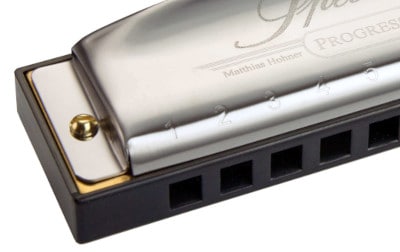
This creates a very comfortable mouthpiece that actually makes you want to play the instrument more, particularly if you are a beginner to the harmonica.
Had I bought a Special 20 as my first harmonica all those years ago, I think my start with the instrument would have been a bit easier.
However, back then the Special 20 hadn’t been available for very long, and people were still quite suspicious of it. Therefore, the advice I received was to get myself a Marine Band C-harp. No regrets, though.
Still, no regrets doesn’t mean I wouldn’t choose the Special 20 as my first instrument knowing what I know now. I would, and other harmonica beginners should too.
